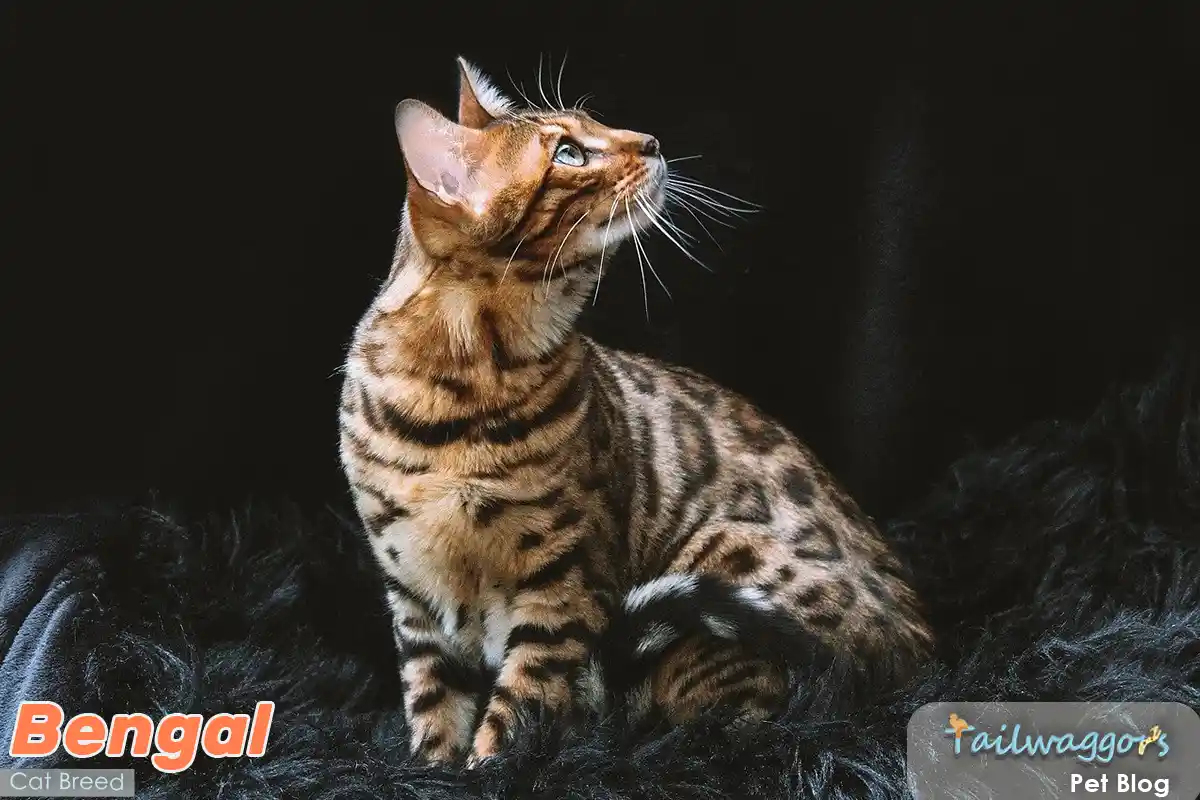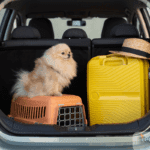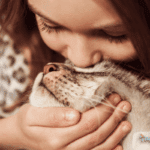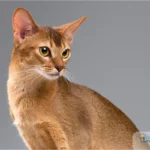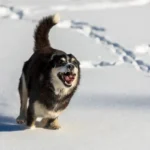The Bengal Cat Breed
Bengal cats captivate with their sleek, muscular builds, exotic spotted or marbled coats, and their unique “glitter” effect that reflects light. These stunning felines, bred from a cross between domestic cats and the wild Asian leopard cat, combine a wild aesthetic with a playful and affectionate nature that makes them highly sought after.
Known for their high energy and “dog-like” loyalty, Bengal cats often form strong bonds with their human families. They thrive on interaction, whether it’s engaging in playful activities, exploring their environment, or simply basking in attention. Unlike most cats, Bengals are even known to enjoy water, adding to their unique charm.
Whether you’re a first-time cat owner, part of a multi-pet household, or looking for an engaging and active feline companion, the Bengal cat’s adaptable, social, and energetic nature makes them an excellent choice. If you’re seeking a stunning and intelligent pet, the Bengal cat may be the perfect fit.
Quick Facts: Meet the Bengal Cat
Here’s a snapshot of Bengal cat traits to help you understand their unique qualities:
| Characteristic | Description | Rating |
|---|---|---|
| Size | Males: 10–15 lbs (4.5–6.8 kg), Females: 8–12 lbs (3.6–5.4 kg) | ⭐⭐⭐⭐ |
| Average Lifespan | 12–16 years | ⭐⭐⭐⭐ |
| Intelligence Ranking | Among the most intelligent breeds | ⭐⭐⭐⭐⭐ |
| Exercise Requirements | High; requires daily physical and mental stimulation | ⭐⭐⭐⭐⭐ |
| Grooming Needs | Low; occasional brushing | ⭐⭐ |
| Training Adaptability | Highly trainable; responds well to enrichment activities | ⭐⭐⭐⭐⭐ |
| Compatibility with Children | Excellent; enjoys active households | ⭐⭐⭐⭐ |
| Energy Level | Very high; loves to climb and play | ⭐⭐⭐⭐⭐ |
| Shedding Level | Moderate | ⭐⭐⭐ |
| Apartment Living | Suitable if sufficiently stimulated | ⭐⭐⭐⭐ |
| Health Issues | Prone to hypertrophic cardiomyopathy (HCM); regular vet check-ups recommended | ⭐⭐⭐ |
| Cost of Ownership | Moderate to high; includes food, toys, and vet care | ⭐⭐⭐⭐ |
| Vocal Tendency | Moderate; communicates through chirps and meows | ⭐⭐⭐ |
| Social Needs | High; thrives on companionship | ⭐⭐⭐⭐⭐ |
- • Adaptable and calm: thrives in both spacious houses and cozy apartments
- • Gentle and affectionate: known for their loving temperament and docile nature
- • Perfect for first-time owners: easygoing personality with manageable grooming needs
- • Devoted companions: forms deep bonds and follows family members like shadows
Key Highlights of Bengal Cats
- Exotic Beauty: Bengals boast a striking resemblance to wild cats, complete with rosettes, marbling, and their signature “glittering” coats.
- Intelligent and Curious: Known for their sharp minds, Bengals excel at learning tricks and exploring new environments.
- Active and Energetic: These cats require daily exercise and play to stay happy and healthy.
- Affectionate Yet Independent: While social, Bengals enjoy moments of independence, often exploring their surroundings.
- Unique Water Affinity: Unlike many cats, Bengals often love water, making bath time less of a struggle!
Bengal cats are among the most unique breeds, with their wild-inspired appearance and playful personality. For a complete list of cat breeds and how to choose the perfect one, check out How Many Cat Breeds? A Complete Guide to Choosing the Perfect Breed.
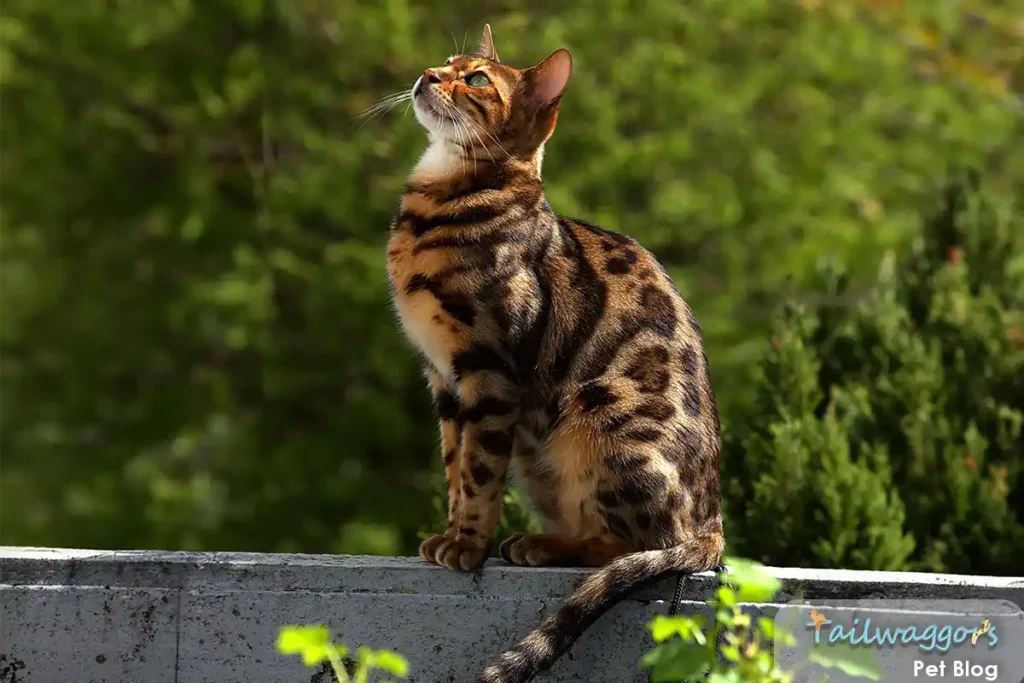
History and Origins of the Bengal Cat
Bengal cats are not just pets—they’re a stunning fusion of wild beauty and domestic charm. With their exotic coats and captivating personalities, Bengals have captured the hearts of cat lovers everywhere. Their journey, from hybrid experimentation to becoming one of the world’s most recognized breeds, is as remarkable as their appearance.
Quick Facts About Bengal Cat Origins
| Aspect | Detail |
|---|---|
| Geographic Origin | United States (wild ancestry in Asia) |
| Historical Roots | Hybrid of domestic cats and Asian leopard cats (Prionailurus bengalensis) |
| Development Timeline | First hybrids in the 1960s; standardized in the 1980s |
| Pioneer Breeder | Jean Mill, geneticist and Bengal cat advocate |
| Recognition | Recognized by The International Cat Association (TICA) in 1986 |
A Wild Beginning: The Asian Leopard Cat
Bengal cats trace their roots to the striking Asian leopard cat (Prionailurus bengalensis), a small, wild feline native to Southeast Asia. Known for their leopard-like coats, these wild cats inspired breeders to create a hybrid that would bring their exotic beauty into the homes of cat enthusiasts. Despite their wild origins, Asian leopard cats are solitary creatures, which led to the challenge of balancing their temperament with domestication.
Like the Abyssinian, a breed with ancient Egyptian roots, Bengals have a unique and fascinating history. Learn more about this ancient breed in Abyssinian Cats: The Complete Guide to the Ancient Sacred Cat of Egypt.
Jean Mill: The Visionary Behind the Bengal Breed
The Bengal cat, as we know it today, owes much to the innovative work of Jean Mill, a geneticist and breeder. In the 1960s, Mill began crossbreeding domestic cats with Asian leopard cats to combine the best traits of both: the stunning coats of wild cats and the loving, trainable nature of house cats.
Through years of dedication and selective breeding, Mill perfected a breed that retained its wild elegance while becoming a beloved family companion. Her work not only established the Bengal breed but also set a precedent for responsible hybrid breeding.
Recognition and Rise to Fame
The Bengal cat gained official recognition from The International Cat Association (TICA) in 1986, a pivotal moment that elevated the breed’s status among cat fanciers. By 1991, Bengals achieved championship status, cementing their place as one of the most sought-after breeds worldwide.
Why Bengals Are Beloved Today
Modern Bengal cats are adored not just for their leopard-like coats but also for their vibrant personalities. Their playful energy, coupled with their affectionate yet independent nature, makes them a unique addition to any home. Whether climbing, playing, or exploring, Bengals bring a touch of the wild to their families while remaining loving and social pets.
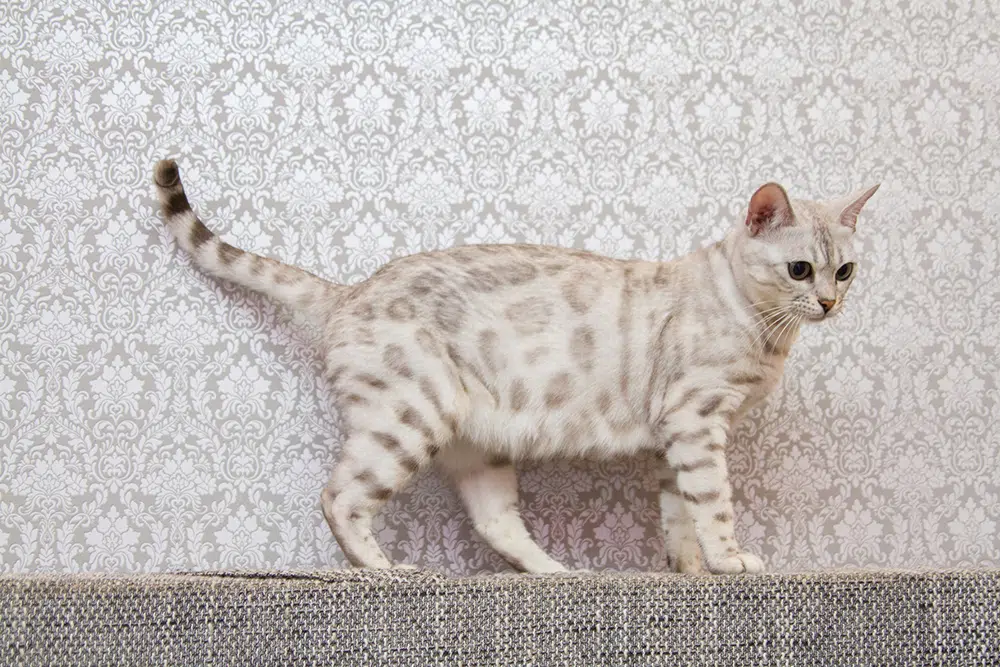
Personality Traits of the Bengal Cat
Bengal cats are renowned for their vibrant personalities, combining intelligence, energy, and affection. These traits make them exceptional companions for those seeking an interactive and engaging feline friend.
Table: Temperament & Behavior Profile
| Behavioral Trait | Characteristic | Training Need | Adaptability Rating |
|---|---|---|---|
| Social Interaction | Highly social | Moderate | ⭐⭐⭐⭐⭐ |
| Activity Level | Very high | High | ⭐⭐⭐⭐⭐ |
| Problem Solving | Excellent | Moderate | ⭐⭐⭐⭐⭐ |
| Attention Seeking | High | Low | ⭐⭐⭐⭐ |
| Independence | Moderate | Low | ⭐⭐⭐ |
Loyal and Affectionate Companions
Bengal cats are known for their strong bonds with their human families. These cats thrive on interaction and often seek companionship, whether it’s following their owners around, curling up nearby, or engaging in playful antics. While Bengals are independent by nature, their social tendencies make them loving and loyal companions.
Bengal cats are deeply affectionate but maintain a balance of independence,” notes Dr. Esther Knoetze, a small animal veterinarian. “They’re perfect for homes that can provide regular interaction without overwhelming them.”
Real-Life Example: Owners often describe how their Bengal cats “check in” with them throughout the day, rubbing against them affectionately or purring contentedly when given attention. Their loyalty is subtle but undeniable, making them cherished members of the family.
Intelligent and Engaging
Bengals are exceptionally intelligent, with problem-solving abilities that often leave their owners in awe. They’re naturally curious and love to explore their surroundings, making interactive toys and challenges essential for mental stimulation. Their sharp minds enable them to learn tricks, respond to commands, and even walk on a leash with proper training.
The Bengal cat’s intelligence is one of its standout features,” says Dr. Knoetze. “Keeping their minds engaged is as important as physical activity to prevent boredom and destructive behavior.”
Real-Life Example: Many Bengal owners share stories of their cats learning to open doors, solve puzzle toys, or fetch toys during playtime. Their intellectual curiosity keeps life with a Bengal endlessly entertaining.
Playful and Energetic
Bengals are the epitome of playful energy. Their athleticism and love for activity mean they require regular exercise to stay happy and healthy. Climbing, chasing, and interactive play sessions are key to fulfilling their high energy needs.
Bengals need a variety of physical activities to stay stimulated,” explains Dr. Knoetze. “Daily play sessions and an enriching environment are non-negotiable for this high-energy breed.”
Real-Life Example: Bengal cats are often described as “mini leopards,” darting after laser pointers, leaping onto climbing towers, or pouncing on feather toys with precision. Their enthusiasm for play makes them an active and lively addition to any home.
Social and Adaptable
Bengal cats are naturally sociable, thriving in environments where they can interact with other pets and family members. While their energetic nature can be intense for some, they tend to adapt well to various household dynamics when given proper introductions and attention.
With their adaptable temperament, Bengals can thrive in multi-pet households,” says Dr. Knoetze. “However, patience and careful introductions are vital to ensuring compatibility.”
Real-Life Example: In homes with children or other pets, Bengal cats often become the star of the show, engaging in playful interactions and showing tolerance when handled gently. Their social nature makes them ideal companions for active families.
Vocal and Expressive
Although not as vocal as some breeds, Bengal cats are highly communicative and use chirps, trills, and meows to express themselves. They may “talk” to their owners, especially when seeking attention or responding to their environment.
🐱 Fun Fact: Bengals are known for their unique chirping sounds, reminiscent of their wild ancestry. These vocalizations add to their exotic and engaging presence.
Real-Life Example: Owners often recount how their Bengal cats chirp excitedly when spotting birds outside or meow persistently to coax their humans into playtime. Their expressive nature creates a strong sense of connection.
Understanding Bengal Personalities
Bengal cats are perfect for households that value intelligence, activity, and affection in a feline companion. Their unique combination of wild-inspired energy and domestic loyalty makes them a truly special breed. By providing the right environment—rich in physical and mental stimulation—owners can enjoy a deeply fulfilling relationship with this remarkable cat.
Bengals are known for their intelligence and active nature, similar to breeds like the Maine Coon and Abyssinian, but with an added wild-inspired charm.
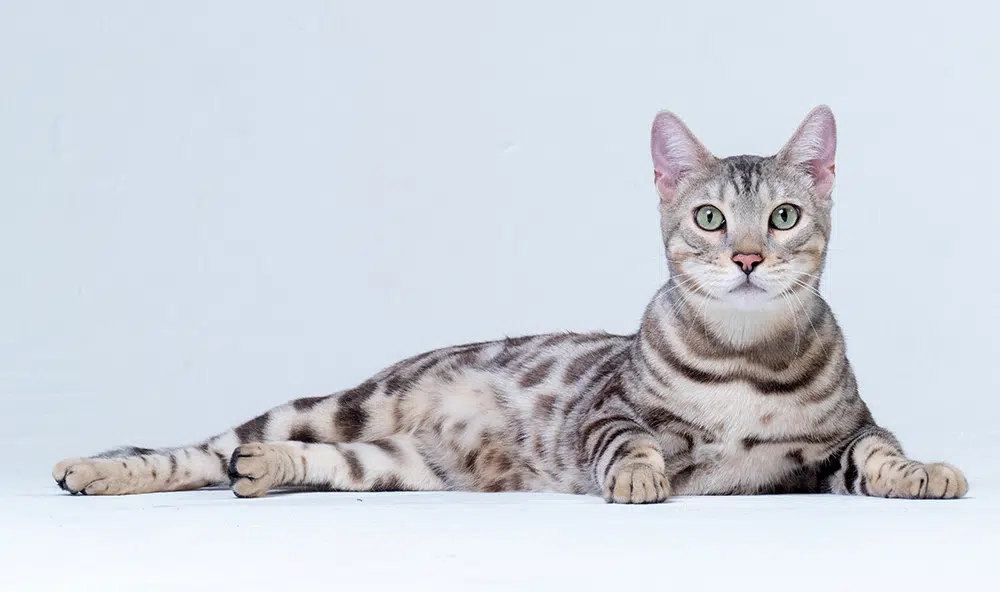
Physical Characteristics of the Bengal Cat
Bengal cats are celebrated for their wild-inspired beauty and sleek, athletic build, which make them one of the most striking domestic cat breeds. Their exotic appearance, featuring leopard-like spots, rosettes, and marbling, reflects their hybrid origins with the Asian leopard cat. Combined with their unique glittering coat and muscular frame, Bengals captivate cat lovers worldwide.
Size and Build
| Feature | Detail |
|---|---|
| Average Size | Males: 10–15 lbs (4.5–6.8 kg), Females: 8–12 lbs (3.6–5.4 kg) |
| Build | Sleek and muscular with a sturdy frame, built for agility and strength |
| Movement | Graceful and athletic, capable of impressive jumps and quick sprints |
- Notable Features: Bengals boast a long, lean body with well-defined muscles, giving them an athletic and agile appearance. Their hind legs are slightly longer than their front legs, contributing to their powerful movements and ability to climb and leap with ease.
Coat Patterns
Bengal cats are best known for their eye-catching coats, which come in various patterns and colors. Their short, dense fur often has a luxurious, silky texture and a unique “glittering” effect caused by light-reflecting hair strands.
Table: Bengal Cat Coat Patterns
| Pattern | Description | Visual Features | Unique Traits |
|---|---|---|---|
| Spotted | Leopard-like spots ranging from round to oval, scattered across the body. | Spots may be uniform or random in shape. | Mimics wild leopard patterns. |
| Rosetted | Spots with darker outlines and lighter centers, resembling leopard rosettes. | Multiple rosette types: clouded, arrowhead. | Unique among domestic cats. |
| Marbled | Swirling patterns resembling marble, with horizontal flow across the body. | Random swirls in various shades. | Patterns are highly individualized. |
Coat Colors
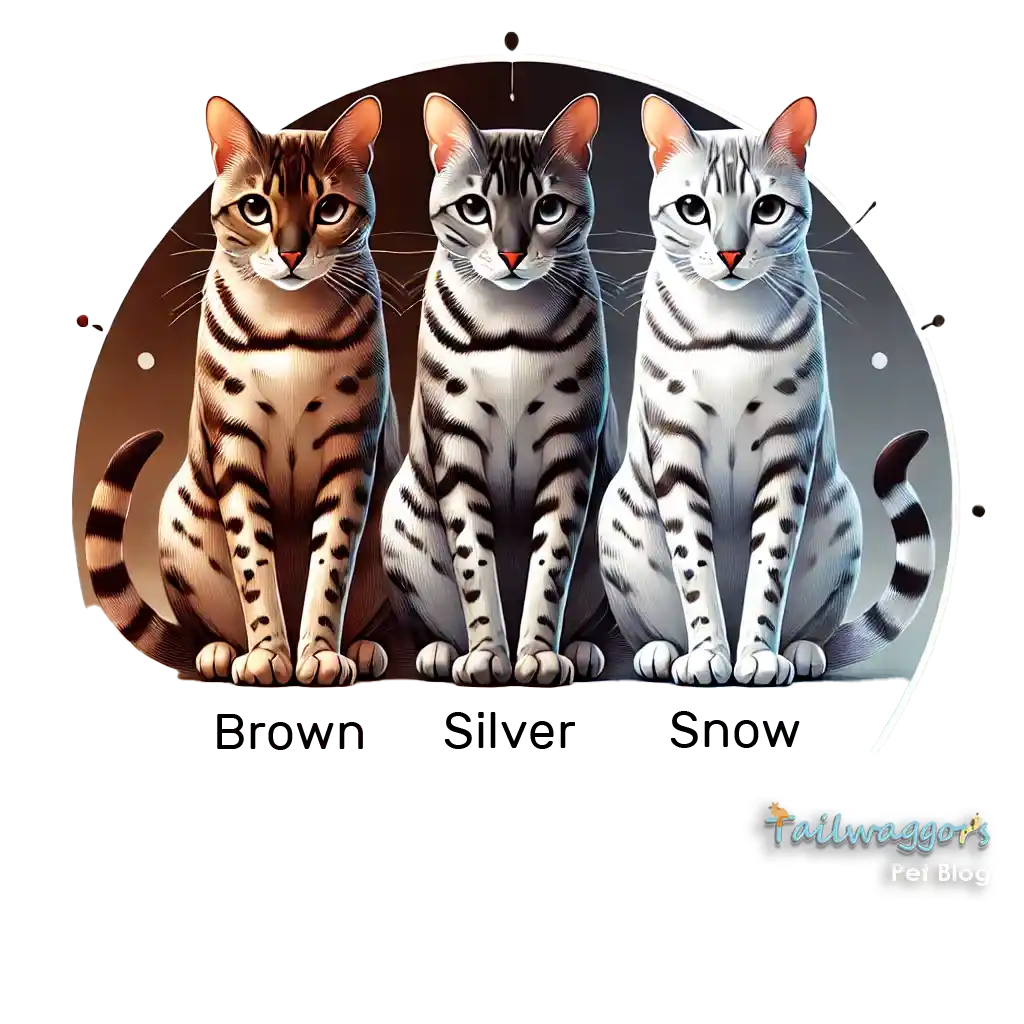
Break down primary coat colors and include examples approved by CFA and TICA.
| Color | Description | Variations | Standout Features |
|---|---|---|---|
| Brown Tabby | Warm tones ranging from golden to orange, with black or dark brown markings. | Shades: rich mahogany, coppery gold. | Most common and iconic Bengal color. |
| Snow | Ivory or cream background with sepia or gray markings. | Variations: Seal Lynx, Seal Mink, Seal Sepia. | Blue or aqua eyes (Seal Lynx). |
| Silver | Cool, silvery background with striking black markings. | Ranges from light silver to charcoal. | Offers a striking contrast with markings. |
🐱 Fun Fact: Bengal cats’ coat “glittering” effect is caused by light reflecting off translucent hair strands, adding a shimmering quality to their fur.
Facial Features
| Feature | Description |
|---|---|
| Eyes | Large, oval, and expressive; often bright green, gold, or hazel |
| Ears | Small and rounded, set wide apart, enhancing their alert, predatory appearance |
| Nose and Whisker Pads | Wide, prominent nose with pronounced whisker pads, adding to their wild expression |
🐾 Tailwaggors Fact:
Bengal cats owe their striking physical traits to a purposeful hybrid breeding program that combined domestic cats and the Asian leopard cat. This fusion created a breed that embodies the wild beauty of its ancestors while maintaining a gentle, trainable temperament.
Unique Features of the Bengal Cat
| Unique Trait | Detail |
|---|---|
| Glittering Coat | A shimmer effect caused by translucent hair shafts, giving the coat a radiant glow |
| Spotted Belly | Even their underside is patterned, adding to their wild-inspired aesthetic |
| High Agility | Bengals are natural climbers and jumpers, thriving with vertical spaces like cat trees |
Why Understanding These Characteristics Matters
The Bengal cat’s physical attributes—muscular build, luxurious coat, and vibrant patterns—set them apart as one of the most visually stunning breeds. By understanding their unique features, potential owners can better appreciate their needs and provide an environment that allows them to thrive. Proper nutrition, grooming, and regular vet care will ensure that these remarkable felines remain happy, healthy, and full of life.
Bengals require a healthy diet to maintain their sleek, muscular build. For detailed dietary insights, see our Abyssinian Cat Diet 2025: Evidence-Based Veterinary Guide to Nutrition and Health.
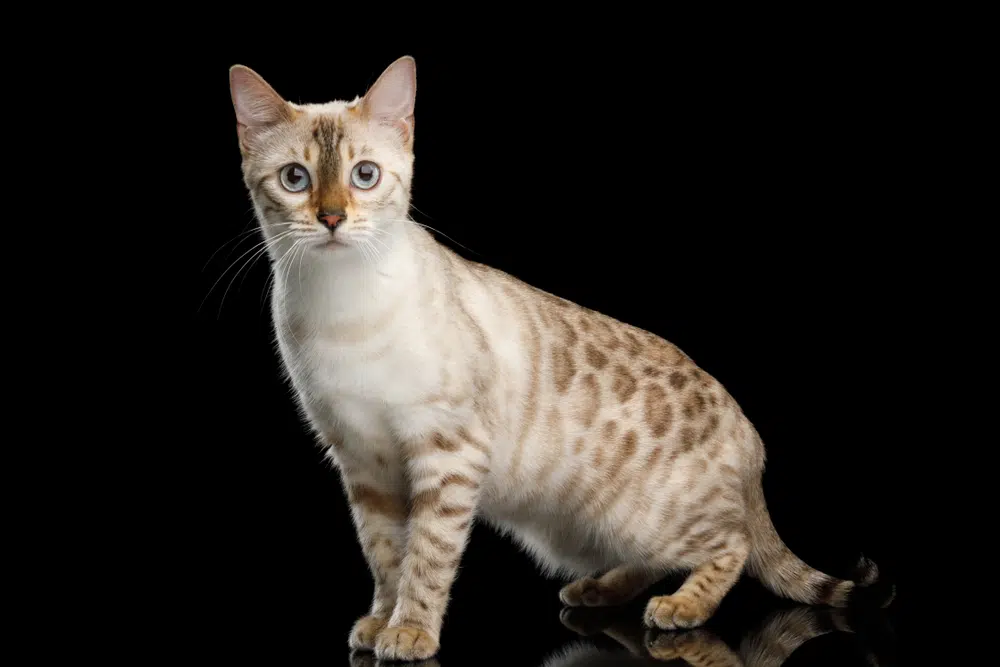
Health and Lifespan of the Bengal Cat
Bengal cats are known for their robust health and active lifestyles, making them one of the more resilient feline breeds. However, like all cats, they have specific health considerations that require attention. By understanding these needs and prioritizing proactive care, you can help your Bengal thrive well into their golden years.
Average Lifespan of Bengal Cats
Bengal cats typically live between 12 and 16 years, with some reaching their late teens with excellent care. Contributing factors to their longevity include genetics, a high-protein diet, regular veterinary checkups, and an environment rich in physical and mental stimulation.
Factors Affecting Longevity:
- Routine Veterinary Care: Annual checkups to screen for breed-specific health concerns like Hypertrophic Cardiomyopathy (HCM) and Progressive Retinal Atrophy (PRA).
- Dietary Needs: A high-protein, grain-free diet supports their energetic lifestyle and lean muscle mass.
- Enrichment Activities: Bengals thrive in environments that cater to their natural instincts, including climbing trees, chasing toys, and exploring.
- Stress-Free Living: Minimize stress by providing a stable, predictable routine.
Bengals’ athletic and inquisitive nature helps them stay fit, but proactive care is essential to prevent common health issues. Regular vet visits and a tailored diet make a significant difference,” says Dr. Esther Knoetze, BSc, BVSc.
Common Health Issues in Bengal Cats
While Bengals are a healthy breed, they are predisposed to certain conditions. Early detection and management are key to maintaining their quality of life.
| Health Aspect | Risk Level | Prevention Options | Management Rating |
|---|---|---|---|
| Hypertrophic Cardiomyopathy (HCM) | High | Genetic testing, annual echocardiograms | ⭐⭐⭐⭐ |
| Progressive Retinal Atrophy (PRA) | High | Genetic screening, safe living spaces | ⭐⭐⭐⭐ |
| Dental Disease | Moderate | Weekly brushing, dental treats | ⭐⭐⭐⭐ |
| Pyruvate Kinase Deficiency (PK Deficiency) | Moderate | Genetic screening, early diagnosis | ⭐⭐⭐ |
| Luxating Patella | Moderate | Weight management, physical therapy | ⭐⭐⭐ |
Hypertrophic Cardiomyopathy (HCM):
- What is it? A genetic heart condition that thickens the heart walls, reducing cardiac function.
- Symptoms: Difficulty breathing, lethargy, reduced appetite.
- Prevention & Management: Annual cardiac screenings, maintaining a healthy weight, and medications if diagnosed.
Progressive Retinal Atrophy (PRA):
- What is it? A condition leading to vision loss and potential blindness.
- Symptoms: Night blindness, clumsiness.
- Prevention & Management: Genetic testing for breeding cats and creating a safe home environment.
Dental Disease:
- What is it? Plaque buildup leading to gum disease or tooth loss.
- Symptoms: Bad breath, inflamed gums, difficulty eating.
- Prevention & Management: Weekly tooth brushing, professional cleanings, and dental treats.
Chronic Kidney Disease (CKD)
- What is it? A progressive condition where the kidneys lose their ability to filter waste effectively.
- Symptoms: Increased thirst, frequent urination, weight loss, and vomiting.
- Prevention & Management:
- Regular blood and urine screenings to catch early signs of kidney dysfunction.
- Provide wet food or a prescription kidney diet to maintain hydration.
- Ensure access to clean, fresh water at all times.
Quick Tip: Incorporate a cat fountain to encourage hydration, which can help protect kidney function over time.
Patellar Luxation
- What is it? A condition where the kneecap (patella) dislocates from its normal position, affecting mobility.
- Symptoms: Limping, skipping steps, difficulty jumping, or joint swelling.
- Prevention & Management:
- Maintain a healthy weight to reduce stress on joints.
- Avoid excessive jumping or high-impact activities.
- In severe cases, surgery may be required to correct the issue.
Quick Tip: Incorporate joint supplements, such as glucosamine and chondroitin, into your Bengal’s diet to support joint health.
Proactive Care Checklist for Bengal Cats
Table: Health Checklist for Bengal Cats
| Health Aspect | Recommended Action | Frequency |
|---|---|---|
| Cardiac Health (HCM) | Perform echocardiograms and monitor for symptoms. | Annually or as needed (from age 2). |
| Vision Health (PRA) | Observe for signs of blindness; create a safe space. | Annually or as needed. Regular observation. |
| Dental Care | Brush teeth; provide dental treats and professional cleanings. | Weekly brushing; annual cleanings. |
| Parasite Control | Administer flea, tick, and worm preventatives. | Monthly. |
| Weight Monitoring | Check body condition score and adjust diet as needed. | Monthly. |
| Genetic Screening (PK) | Test for genetic markers in breeding programs. | Once for breeding cats. |
Regular veterinary care is essential to keeping Bengal cats healthy and managing potential breed-specific conditions.
- Dental Care: Brush your Bengal cat’s teeth weekly and offer dental chews to reduce plaque buildup. Annual professional cleanings are advised.
- Parasite Prevention: Monthly treatments for fleas, ticks, and worms are essential to avoid discomfort and illness.
- Weight Management: Monitor your cat’s body condition regularly and adjust portion sizes to maintain a healthy weight.
- Vaccinations: Ensure your Bengal cat is up-to-date on core vaccines, including feline distemper and rabies.
Signs of Illness to Watch For in Bengal Cats
Early detection is crucial to managing health issues effectively. Contact your veterinarian if you observe:
- Persistent lethargy or breathing difficulty (potential HCM).
- Night blindness or clumsiness (possible PRA).
- Unexplained weight loss or pale gums (may indicate anemia).
- Bad breath or swollen gums (could signal dental disease).
Bengals’ athletic nature is a testament to their health, but it’s essential to monitor subtle changes. Early detection is key to effective management of breed-specific conditions,” advises Dr. Esther Knoetze, BSc, BVSc.
Ensuring a Healthy Life
With regular health screenings, a high-quality diet, and plenty of physical and mental engagement, Bengals can lead long, vibrant lives. These playful and intelligent cats reward proactive care with boundless affection, loyalty, and entertainment.
Real-Life Success Story:
A Bengal cat named Luna showed signs of clumsiness at night. A genetic test confirmed PRA, and her family adapted their home to accommodate her changing vision. Thanks to early detection and a safe environment, Luna continued to enjoy an active, happy life.
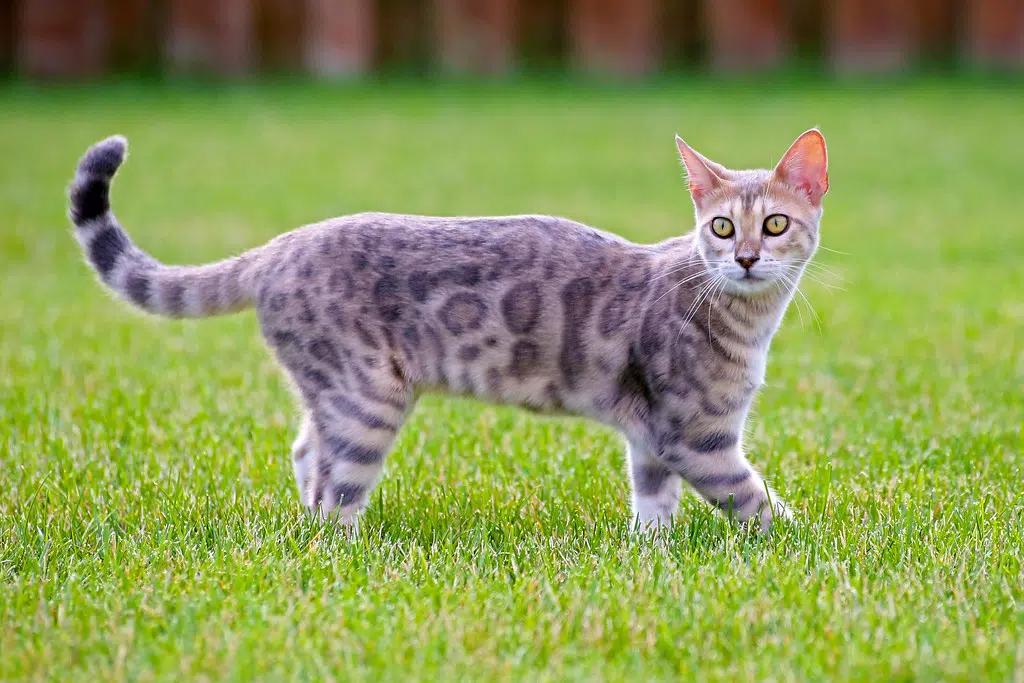
Caring for a Bengal Cat: Excercise, Diet and Enrichment
Bengal cats are one of the most active and intelligent cat breeds, requiring thoughtful care to meet their physical, mental, and environmental needs. Proper exercise, a nutrient-rich diet, and a stimulating living space are essential for these athletic felines to thrive.
Grooming: Low Maintenance with a Luxurious Touch
Bengals’ short, dense coats are easy to care for, making grooming a quick and simple routine.
- Brushing: A weekly brushing session with a soft-bristle brush enhances their coat’s natural shine and reduces shedding.
- Nail Trimming: Trim nails every 2–3 weeks to keep them comfortable and prevent scratching damage.
- Ear and Eye Care: Check for debris in the ears and gently clean if necessary. Wipe eyes with a damp cloth to remove discharge.
🐾 Tailwaggors Tip:
Begin grooming early to build trust and create a stress-free routine. Use positive reinforcement to make grooming a bonding experience.
Diet and Nutrition: Fueling Their Energy
Bengal cats are highly active, requiring a diet that supports their physical demands and maintains their muscular build.
- High-Protein Diet: Choose premium cat food with high-quality animal protein as the primary ingredient. Protein is essential for muscle development and sustained energy.
- Portion Control: Overfeeding can lead to obesity, even in active cats. Consult your veterinarian for portion recommendations based on your Bengal’s age, weight, and activity level.
- Hydration: Bengals are drawn to moving water, so investing in a cat water fountain can encourage drinking and promote kidney health.
- Wet vs. Dry Food: A mix of wet and dry food balances hydration and dental health. Wet food provides essential moisture, while dry kibble reduces plaque buildup.
Tailwaggors Tip: Offer occasional treats of safe human foods, such as cooked chicken, turkey, or salmon, for variety and enrichment.
A diet rich in animal protein and balanced nutrients is key to supporting a Bengal cat’s active lifestyle and preventing energy dips,” advises Dr. Esther Knoetze.
Exercise and Enrichment: Meeting Their High Energy Demands
Bengals thrive on physical activity and mental challenges. Without adequate stimulation, they may resort to destructive behaviors, such as scratching furniture or excessive vocalization.
Physical Exercise
- Interactive Play: Dedicate 15–20 minutes twice daily to playtime using feather wands, laser pointers, or ball toys to mimic hunting behaviors.
- Climbing Opportunities: Install cat trees, wall-mounted shelves, or multi-level towers to satisfy their instinct to climb and explore vertical spaces.
- Supervised Outdoor Time: Train your Bengal to walk on a harness for safe outdoor exploration. This provides both physical exercise and mental stimulation.
Mental Stimulation
- Puzzle Feeders: Combine meal times with puzzle toys that challenge their problem-solving skills and activate hunting instincts.
- Rotating Toys: Keep them engaged by rotating toys weekly and introducing new ones periodically.
- Training Sessions: Use positive reinforcement to teach tricks like “sit,” “fetch,” or leash walking. Training sessions provide mental enrichment and strengthen the bond between you and your Bengal.
🐾 Tailwaggors Tip:
Create DIY enrichment activities, such as hiding treats around your home for scavenger hunts or building obstacle courses using household items.
Bengal cats require both physical and mental stimulation to stay happy and healthy. Structured play and problem-solving activities are essential to prevent boredom,” notes Dr. Knoetze.
Creating the Perfect Environment for a Bengal Cat
Bengals need a living space that matches their athletic and curious nature. A thoughtfully designed environment allows them to express their instincts while feeling safe and secure.
- Vertical Spaces: Provide plenty of climbing opportunities with cat trees, wall shelves, and window perches. These spaces satisfy their love of heights and offer vantage points for observing their surroundings.
- Interactive Elements: Include scratching posts, tunnels, and interactive toys to keep them entertained.
- Safe Retreats: Even high-energy cats need downtime. Offer cozy beds or cat caves in low-traffic areas where they can relax undisturbed.
- Outdoor Enrichment: For Bengals who enjoy the outdoors, consider building a secure “catio” or using a harness for supervised outdoor time.
- Birdwatching Spots: Set up a window perch near bird feeders or leafy outdoor views to provide natural stimulation.
🐾 Tailwaggors Tip:
Rotate furniture and add new climbing or hiding spots occasionally to maintain novelty and keep your Bengal engaged.
A Bengal’s environment should mimic their natural instincts, offering a balance of stimulation and comfort,” says Dr. Knoetze, BSc, BVSc.
Bengals are known for their curiosity, so make sure your home is cat-proofed. Check out our Complete Guide to Cat-Proofing Your Home: Vet-Approved Safety Solutions.”
Why Proper Care Matters
Caring for a Bengal cat means embracing their dynamic nature and providing a home that supports their high energy and intelligence. By focusing on exercise, mental stimulation, a nutrient-rich diet, and an enriching environment, you can ensure your Bengal thrives as a healthy and happy companion. With love and thoughtful care, these remarkable felines will reward you with years of loyalty and joy.
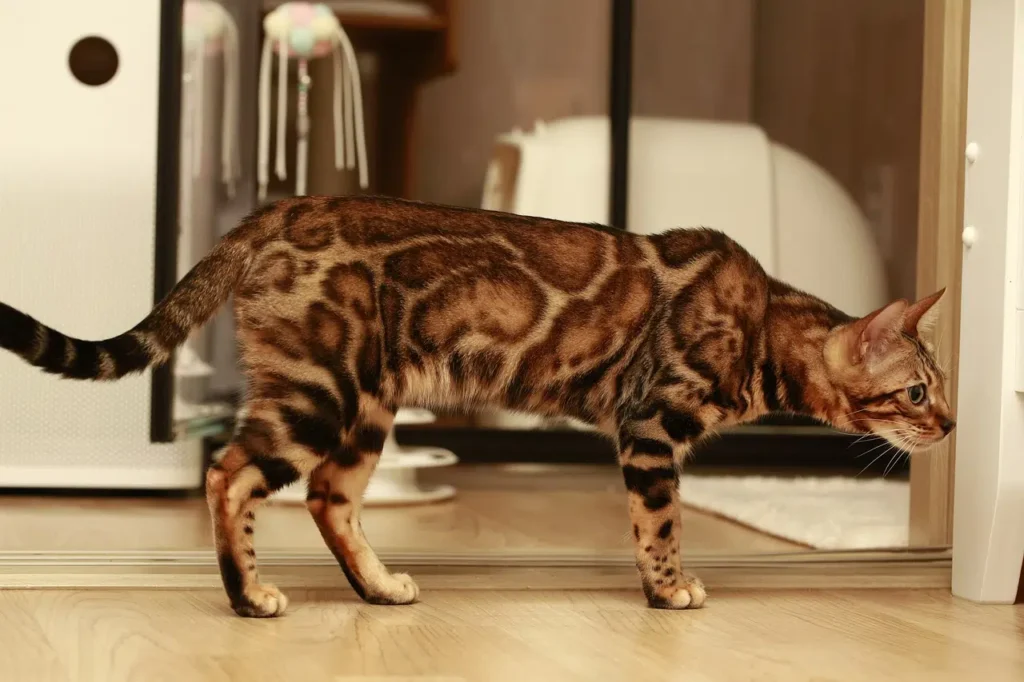
Owning a Bengal Cat: Budgeting and Financial Insights
Bringing a Bengal cat into your home is an exciting and rewarding experience. However, understanding the financial responsibilities is key to ensuring your Bengal cat lives a happy and healthy life. This guide outlines the initial costs, annual expenses, and cost-saving tips to help you prepare effectively.
Table: Cost Breakdown Analysis for Bengal Cats
| Expense Category | Initial Cost (USD) | Annual Cost (USD) | Value Rating |
|---|---|---|---|
| Adoption or Breeder Fees | $100–$300 (Adoption), $1,500–$3,000 (Breeder) | N/A | ⭐⭐⭐⭐⭐ |
| Food and Treats | N/A | $600–$1,200 | ⭐⭐⭐⭐⭐ |
| Litter and Maintenance | $30–$100 | $180–$360 | ⭐⭐⭐⭐ |
| Veterinary Care | $150–$500 | $300–$600 | ⭐⭐⭐⭐⭐ |
| Grooming Supplies | $20–$50 | $20–$50 | ⭐⭐⭐⭐ |
| Pet Insurance | N/A | $240–$720 | ⭐⭐⭐⭐ |
| Toys and Enrichment | $50–$200 | $50–$150 | ⭐⭐⭐⭐⭐ |
| Emergency Care | $200–$5,000 (varies) | N/A | ⭐⭐⭐⭐⭐ |
Initial Costs: Preparing for Your Bengal Cat
Adoption vs. Breeder Fees
- Adoption Fees: $100–$300
Adopting a Bengal from a shelter or rescue is cost-effective and typically includes vaccinations, spaying/neutering, and microchipping. - Breeder Fees: $1,500–$3,000
Purchasing from a reputable breeder ensures a healthy Bengal with proper lineage documentation and distinct breed characteristics.
Essential Supplies for Day One
Prepare your home with these essentials to ensure your Bengal’s comfort:
| Item | Cost Range (USD) |
|---|---|
| Litter Box | $30–$100 |
| Cat Litter (per bag) | $15–$25 |
| Food and Water Bowls | $15–$30 |
| Scratching Posts | $20–$100 |
| Cat Tree | $50–$300 |
| Cat Bed | $20–$150 |
| Toys and Puzzles | $15–$50 |
| Grooming Tools | $20–$50 |
Estimated Setup Cost: $200–$750
Ongoing Annual Costs
Food and Treats
Bengals’ high activity levels require a diet rich in protein to support their energy needs.
| Food Type | Cost Range (Annually) |
|---|---|
| Dry Food | $300–$600 |
| Wet Food | $200–$400 |
| Specialty Diets | $500–$1,000 |
🐾 Tailwaggors Tip:
Mix wet and dry food for hydration and dental health. Consult your vet for portion sizes tailored to your Bengal’s weight and activity level.
Litter and Maintenance
Maintaining a clean litter box is essential for your Bengal’s health and comfort.
| Expense | Cost Range (Annually) |
|---|---|
| Litter | $180–$300 |
| Replacement Boxes | $50–$100 (as needed) |
Tailwaggors Tip: Consider clumping litter for easier cleaning and odor control.
Toys and Enrichment
Bengals are highly intelligent and active, requiring continuous stimulation through toys and activities.
| Expense | Cost Range (Annually) |
|---|---|
| Interactive Toys | $50–$100 |
| Climbing Structures | $50–$150 |
🐾 Tailwaggors Tip:
Rotate toys weekly and introduce puzzles to keep your Bengal engaged and prevent boredom.
Veterinary Care
Routine veterinary visits help detect health issues early and keep your Bengal in top shape.
| Category | Cost Range (Annually) |
|---|---|
| Wellness Exams | $150–$200 |
| Vaccinations | $50–$100 |
| Flea, Tick, and Worm Prevention | $60–$150 |
| Dental Cleanings | $300–$500 (every 1–2 years) |
Preventive care is essential for a healthy Bengal. Routine exams and vaccinations help avoid costly treatments,” says Dr. Esther Knoetze, BSc, BVSc.
Hidden and Emergency Costs
Planning for unexpected expenses ensures your Bengal receives timely care.
- Emergency Vet Visits: $200–$5,000 for diagnostics or surgeries.
- Prescription Diets: $400–$1,000 annually for specific health conditions.
- Pet Boarding or Sitting: $25–$50 per day during travel.
🐾 Tailwaggors Tip:
Consider pet insurance that covers breed-specific issues like HCM and PRA to offset potential emergency costs.
Cost-Saving Strategies for Bengal Owners
- Buy in Bulk: Save on litter and food by purchasing during sales.
- Preventive Healthcare: Regular checkups help catch potential issues early, avoiding expensive treatments.
- Durable Supplies: Invest in high-quality toys, scratching posts, and bedding for long-term use.
- DIY Enrichment: Create obstacle courses or scavenger hunts at home for cost-effective mental stimulation.
Is Owning a Bengal Cat Worth the Investment?
Owning a Bengal cat is a rewarding experience that comes with financial responsibilities. By planning for initial and ongoing costs, as well as preparing for unexpected expenses, you can provide a fulfilling and comfortable life for your Bengal. With their playful energy and affectionate nature, Bengals are sure to bring joy and excitement to your home.
For more ownership tips and expert advice, explore our:
Disclaimer:
The cost estimates provided in the “Bengal Cat: Budgeting and Financial Insights” section are general approximations based on current market trends and commonly reported expenses in the United States. Actual costs may vary depending on factors such as location, individual pet needs, specific health conditions, and lifestyle choices.
These estimates are intended for informational purposes only and should not replace personal research or consultations with veterinary or pet care professionals. We recommend setting aside additional funds for unexpected expenses, including emergency veterinary care and specialized dietary or training needs, to ensure your Alaskan Malamute receives the best possible care.
Always consult with a veterinarian or trusted breeder for detailed guidance tailored to your specific situation. Tailwaggors is not responsible for discrepancies or unforeseen costs that may arise.
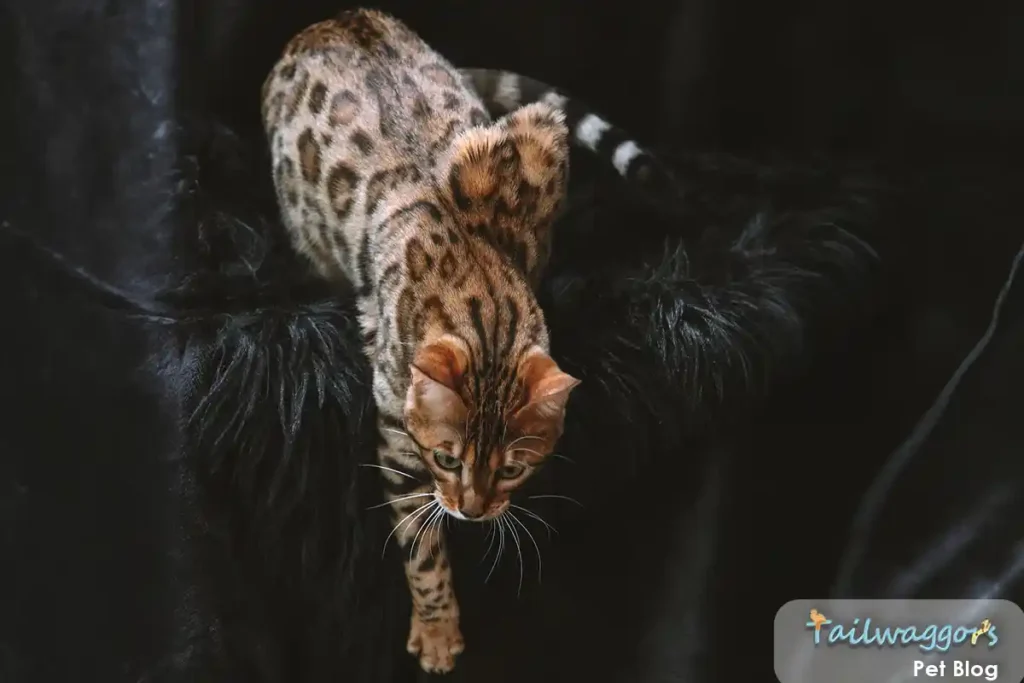
Breed Comparison: Bengal Cat vs. Other Popular Breeds
When choosing a cat breed, comparing the Bengal to other popular options can help you determine the best fit for your household. With their wild-inspired appearance, high energy levels, and intelligent personalities, Bengal cats stand out for their active and engaging nature. Let’s explore how Bengals compare to Savannahs, Abyssinians, and Maine Coons.
Table: How Does the Bengal Cat Compare?
| Aspect | Bengal | Savannah | Abyssinian | Maine Coon |
|---|---|---|---|---|
| Size | Medium to Large(8–15 lbs) | Large(12–25 lbs) | Medium(6–10 lbs) | Large(10–18 lbs) |
| Coat | Short, dense | Short to medium, coarse | Short, fine | Long, shaggy |
| Personality | Active, intelligent | Energetic, adventurous | Playful, curious | Gentle, friendly |
| Grooming Needs | Low | Low to Moderate | Low | Moderate to High |
| Energy Level | Very High | Very High | High | Moderate |
| Affection Level | High | Moderate | High | High |
| Compatibility with Pets | Good with proper introduction | Varies | Good | Good |
Bengal vs. Savannah
Bengal and Savannah cats both exhibit striking, wild-inspired appearances and share high energy levels. However, differences in size, ancestry, and temperament make each breed unique.
- Wild Ancestry: Bengals descend from the Asian leopard cat, giving them a wild look with domestic behavior. Savannahs, hybrids of domestic cats and African servals, often retain more pronounced wild instincts, making them less predictable.
- Size: Savannahs are larger, often weighing 12–25 lbs, compared to the Bengal’s 8–15 lbs.
- Temperament: Bengals are affectionate and people-oriented, thriving on interaction with their families. Savannahs are adventurous but may be more aloof or independent.
- Activity Levels: Both breeds require significant enrichment, but Savannahs may demand more space to satisfy their exploratory instincts.
Pro Tip: If you love a wild aesthetic but want a more interactive and affectionate companion, the Bengal may be the better fit.
While both breeds need significant stimulation, Savannahs often require an experienced owner due to their wild lineage, whereas Bengals strike a better balance of exotic appearance and domestic temperament,” advises Dr. Esther Knoetze, BSc, BVSc.
Bengal vs. Abyssinian
Abyssinians share the Bengal’s high energy and playful personality but differ in physical appearance and social traits.
- Appearance: Bengals feature a muscular build with spotted or marbled coats, while Abyssinians are more petite with a sleek, ticked tabby coat.
- Social Traits: Both breeds are curious and intelligent, but Abyssinians are often more adaptable to multi-pet households and less demanding of constant interaction.
- Energy Levels: Bengals may require more intense physical activity, such as climbing and interactive play, to satisfy their instincts.
Pro Tip: Choose an Abyssinian if you want a lively, intelligent cat with lower exercise demands. Opt for a Bengal if you’re ready for a more high-energy and athletic companion.
Both breeds thrive on engagement, but Abyssinians may fit better into busy homes due to their slightly lower activity levels and more relaxed social demands,” notes Dr. Knoetze, BSc, BVSc.
Bengal vs. Maine Coon
Maine Coons, known as the “gentle giants” of the cat world, contrast sharply with the athletic and high-energy Bengal in both personality and care requirements.
- Size: Maine Coons are significantly larger, weighing 10–18 lbs or more, making them ideal for owners seeking a large, laid-back feline.
- Coat: Maine Coons have a long, shaggy coat that requires regular grooming, whereas Bengals’ short, dense coats are low-maintenance.
- Temperament: Bengals are active, curious, and adventurous, while Maine Coons are gentle, friendly, and adaptable to quieter households.
- Energy Levels: Maine Coons have moderate energy levels, making them a better fit for families looking for a calmer pet.
Pro Tip: Choose a Maine Coon if you prefer a calm, low-maintenance temperament and don’t mind extra grooming. Opt for a Bengal if you want a vibrant, interactive companion with fewer grooming needs.
Maine Coons are excellent for families seeking a large, affectionate, and gentle companion. In contrast, Bengals are perfect for owners who enjoy an energetic and engaging pet,” says Dr. Knoetze, BSc, BVSc.
Why Choose the Bengal?
Bengal cats are ideal for active households or individuals who value intelligence, playfulness, and constant engagement. Their wild-inspired looks and affectionate personalities make them a unique choice for cat lovers ready to meet their high exercise and enrichment needs.
“Bengals thrive in interactive environments where they can explore, climb, and play. With the right care, they form deep bonds and bring endless joy to their owners,” emphasizes Dr. Knoetze.
By understanding how Bengal cats compare to Savannahs, Abyssinians, and Maine Coons, you can choose the perfect breed for your lifestyle. Whether you’re looking for a high-energy adventurer or a calmer companion, each breed offers something special. However, for those who want a truly unique, intelligent, and active pet, the Bengal stands out as an extraordinary choice.
For a laid-back alternative to Bengals, consider the Ragdoll or British Shorthair.
Compared to the vocal Siamese, the Bengal offers a more independent yet equally engaging personality. Learn more in our Ultimate Guide to the Siamese Cat Breed.
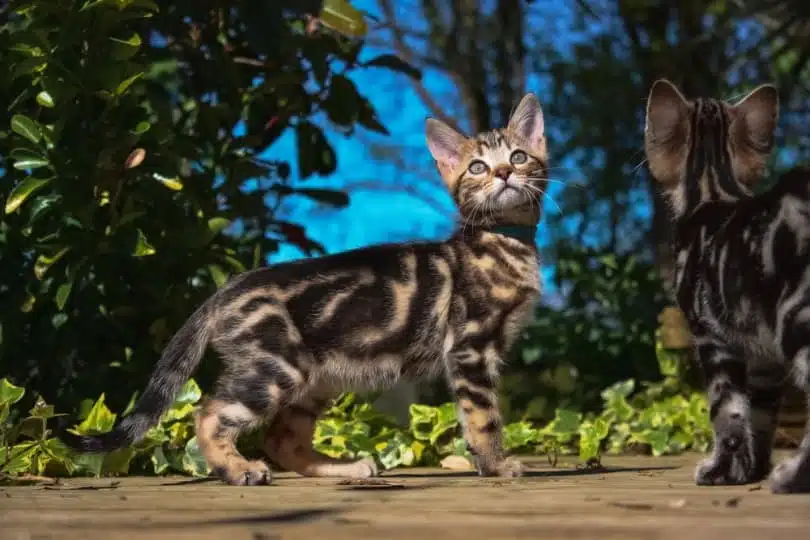
Frequently Asked Questions About the Bengal Cat
Bengal cats captivate owners with their exotic looks, high energy, and intelligent personalities. Below, we answer some of the most common questions prospective and current Bengal cat owners often have.
Are Bengal cats hypoallergenic?
+No, Bengal cats are not hypoallergenic. Like all cats, they produce dander and proteins that can trigger allergies. However, their short coat and lower shedding levels may reduce the amount of allergens compared to long-haired breeds.
🐾 Tailwaggors Tip:
Regular grooming, vacuuming, and the use of HEPA air filters can help allergy-prone households manage allergens.
How much do Bengal cats weigh?
+Bengal cats are medium to large-sized cats:
- Males: 10–15 lbs (4.5–6.8 kg)
- Females: 8–12 lbs (3.6–5.4 kg)
Their muscular build contributes to their athletic and agile appearance.
How long do Bengal cats live?
+With proper care, Bengal cats live an average of 12–16 years. Some Bengals can live into their late teens with excellent nutrition, regular vet checkups, and an enriched environment.
🩺 Veterinary Insight:
“Preventive care, including regular cardiac and vision screenings, can significantly enhance a Bengal cat’s lifespan.” – Dr. Esther Knoetze, DVM
Are Bengal cats good with children and other pets?
+Yes! Bengals are playful, affectionate, and tolerant, making them wonderful companions for children and other pets. Their interactive nature allows them to thrive in dynamic households.
🐾 Tailwaggors Tip:
Introduce Bengals to other pets gradually, using positive reinforcement to build trust and prevent territorial behavior.
Do Bengal cats like water?
+Many Bengal cats are fascinated by water. They may enjoy batting at running faucets, splashing in shallow bowls, or even joining their owners in the shower. This playful curiosity is one of their signature traits.
How do you train a Bengal cat?
+Bengals are highly intelligent and respond well to positive reinforcement training. Use treats, toys, and praise to teach them tricks like “fetch” or commands like “sit.” They also excel at leash training for supervised outdoor adventures.
🐾 Tailwaggors Tip:
Keep training sessions short and rewarding to maintain your Bengal’s focus and enthusiasm.
What are the grooming needs of a Bengal cat?
+Bengals have sleek, low-maintenance coats. Weekly brushing helps remove loose fur and keeps their coat shiny. Grooming sessions are also a great opportunity to check for skin issues or parasites.
🩺 Veterinary Insight:
Combine coat brushing with regular dental care and ear cleaning to ensure overall health.
Are Bengal cats prone to any specific health problems?
+While generally healthy, Bengals are predisposed to some breed-specific health issues:
- Hypertrophic Cardiomyopathy (HCM): A genetic heart condition that requires regular screenings.
- Progressive Retinal Atrophy (PRA): A hereditary condition that leads to vision loss.
- Dental Issues: Bengals can develop gum disease if dental care is neglected.
🩺 Veterinary Tip:
Regular checkups and genetic testing can help identify and manage these conditions early.
How much exercise does a Bengal cat need?
+Bengal cats are extremely active and require daily interactive play sessions to stay healthy and prevent boredom. Feather wands, laser pointers, climbing trees, and puzzle toys are great ways to keep them engaged.
Can Bengal cats be kept indoors?
+Yes, Bengals can thrive indoors with proper enrichment. An environment equipped with climbing structures, scratching posts, and toys will keep them entertained and prevent destructive behaviors.
🐾 Tailwaggors Tip:
Set up window perches or a secure outdoor catio to provide safe exploration and satisfy their curiosity.
Bengals: The Ultimate Energetic Companion
The Bengal cat combines exotic beauty, intelligence, and an adventurous personality. By understanding their unique traits and meeting their care needs, owners can develop a deeply rewarding relationship with their Bengal companion. With proper care, enrichment, and regular veterinary checkups, Bengal cats bring joy, excitement, and affection to their families.
For essential advice on creating the best environment for your Bengal or handling emergencies, explore these must-read guides:
- Prevent Cat Poisonings: Essential Tips and Emergency Advice for Pet Owners
- Vet-Approved New Cat Supply Checklist
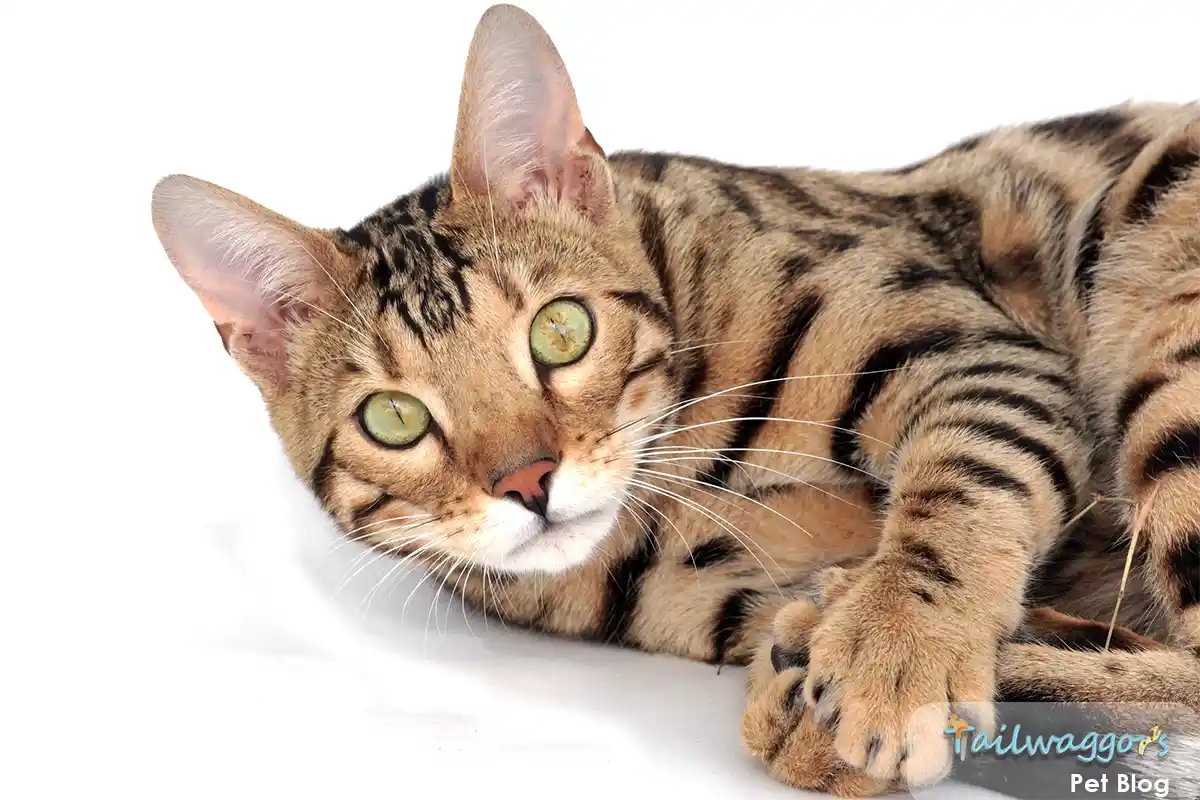
Conclusion: Wrapping Up the Ultimate Guide to the Bengal Cat
Bengal cats are truly extraordinary companions, blending exotic beauty, boundless energy, and remarkable intelligence into one unforgettable breed. Their playful antics, wild-inspired looks, and affectionate personalities make them a cherished addition to any home. Whether you’re a seasoned cat enthusiast or a first-time owner, Bengals captivate with their curiosity and charm.
Providing the Best Care for Bengal Cats
To help your Bengal thrive, it’s essential to meet their unique needs. From providing daily exercise and mental stimulation to maintaining a high-protein diet and regular veterinary checkups, attentive care is key. Bengals demand environments that cater to their high energy and intelligence, making interactive play and enrichment essential.
Preventive care, physical activity, and mental stimulation are critical for keeping Bengals healthy and happy,” advises Dr. Esther Knoetze, BSc, BVSc. “This ensures a long and fulfilling life for these active felines.”
Thinking of Adopting a Bengal Cat?
Adopting a Bengal cat is a rewarding experience, but it comes with unique responsibilities. Their active and social nature requires time, attention, and resources. In return, they offer unparalleled affection, entertainment, and loyalty, making them an ideal companion for engaged and interactive households.
If you’re considering other breeds, visit our Complete Guide to Choosing the Perfect Cat Breed or explore the unique traits of the Abyssinian Cat.

Share Your Bengal Story!
We’d love to hear about your experiences with Bengal cats! Share your tips, stories, and insights in the comments section below. Don’t forget to connect with us on social media for expert advice, care tips, and the latest updates about Bengals and other incredible feline breeds. Contact Tailwaggors.
🐾✨ Learn everything you need to know about Bengal cats in this must-read guide.
Share with your fellow cat lovers and join the conversation 🐱❤️


